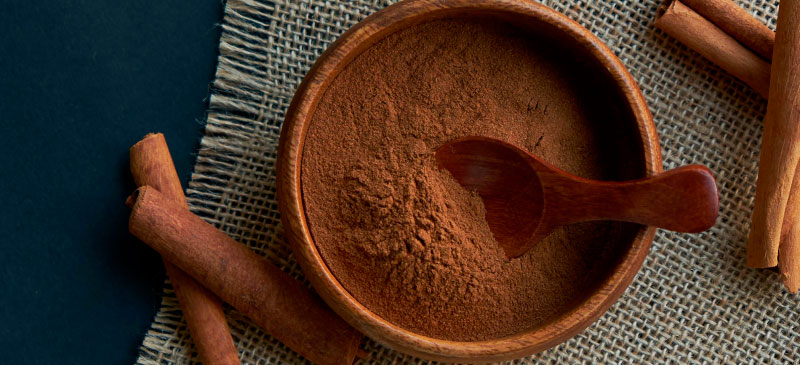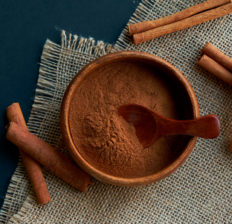This Dr. Axe content is medically reviewed or fact checked to ensure factually accurate information.
With strict editorial sourcing guidelines, we only link to academic research institutions, reputable media sites and, when research is available, medically peer-reviewed studies. Note that the numbers in parentheses (1, 2, etc.) are clickable links to these studies.
The information in our articles is NOT intended to replace a one-on-one relationship with a qualified health care professional and is not intended as medical advice.
This article is based on scientific evidence, written by experts and fact checked by our trained editorial staff. Note that the numbers in parentheses (1, 2, etc.) are clickable links to medically peer-reviewed studies.
Our team includes licensed nutritionists and dietitians, certified health education specialists, as well as certified strength and conditioning specialists, personal trainers and corrective exercise specialists. Our team aims to be not only thorough with its research, but also objective and unbiased.
The information in our articles is NOT intended to replace a one-on-one relationship with a qualified health care professional and is not intended as medical advice.
DIY Foundation Makeup with Sunscreen
July 3, 2022

Foundation makeup has many benefits, specifically helping to smooth out the tone of the skin. But most store-bought foundation products are filled with a long list of ingredients that can damage your skin, cause cancer and affect your endocrine system.
It also has a long history with its appeal for stage actors created by the famous Max Factor, but even the ancient Greeks and Romans wore contaminated foundation containing high levels of white lead and mercury that caused lethal poisoning.
Some ingredients, as reported by greenamerica.org, are found to be toxic. Parabens, synthetic scents, nanoparticles, formaldehyde, mercury and lead are just a few that can be found on most labels.
You can search products on the Cosmetic Database website at ewg.org, but perhaps the easiest and healthiest thing to do is make your own right at home. DIY foundation makeup can be a fundamental part of your natural skin care routine.
Keep in mind that DIY makeup, as an all-natural foundation, is not as daunting to make as you may think to prepare. In fact, it is very easy and can be made with just a few ingredients. When choosing your ingredients, use unrefined, raw and organic where possible.
Let’s jump into your personal homemade makeup that is just right for you!
How to Make DIY Foundation
To start making your DIY foundation makeup, measure all of your ingredients and set aside. Now, using a double-boiler or a glass bowl in a pan of water, turn on low heat and place the cupuacu butter, coconut oil and the cocoa butter into the bowl. Using a whisk, stir to blend.
Cupuacu butter is an amazing ingredient because it is the key to this emollient-rich recipe. Made from pulp of the fruit of the cupuacu tree that is native to the Amazon rainforests, cupuacu butter is a great vegan alternative and is more than 150 percent richer in its ability to hydrate the skin than shea butter. Though shea butter is a great option, if soft, supple moisturized skin is what you’re after, try cupuacu butter!
Now add the vitamin E and the rose hip seed oil. Make sure to blend well. Remove from heat.
Vitamin E has long been known for its skin-healing properties. It fights free radical damage while helping reduce inflammation, plus it’s a natural anti-aging nutrient. Chock-full of nourishing vitamins and antioxidants, rosehip seed oil may help reduce fine lines, wrinkles, diminish those dark spots and help hydrate dry skin making it the perfect ingredient to this extra moisturizing foundation.
Next up, add the zinc oxide and stir. Zinc oxide offers some amazing sunscreen benefits. You need to make sure you choose the uncoated, non-nano and non-micronized versions. In addition to being a great sun-blocker and cancer-fighter, zinc oxide lowers skin inflammation, helps prevent acne and locks in moisture all the while helping form healthy collagen in the skin.
Now, let’s add some color to your DIY foundation makeup! It is important to be careful with the amount of cacao and cinnamon you add. The reason is that these ingredients offer the tone of the foundation. If you need it darker, you will want to add more. For a lighter tone, use less. The best thing to do is start with less and test it on your jawline, in sunlight, to get just the right amount.
Make sure to pay attention to how much you use so that you can note it in your personal DIY makeup recipe. To give you an idea, about a ½ tablespoon of cocoa powder will give you a light foundation, add another teaspoon for a medium foundation, and one tablespoon will result in a medium-dark foundation.
Cacao is a pretty amazing ingredient that not only is delicious in some recipes, but it’s great for the skin with its high antioxidant contents. Meanwhile, benefit-rich cinnamon is right up there with cacao in the antioxidant category and has been used medicinally for centuries.
Once you have reached your desired shade, pour the DIY foundation makeup into your container and allow it to cool. You can use a silicon makeup tube or a glass jar. If using a jar, make sure to wash your hands prior to each use to avoid contamination.
Print
DIY Foundation Makeup with Sunscreen
- Total Time: 15 minutes
- Yield: 20 applications 1x
Description
Keep in mind that DIY makeup, as an all-natural foundation, is not as daunting to make as you may think to prepare. In fact, it is very easy and can be made with just a few ingredients. When choosing your ingredients, use unrefined, raw and organic where possible.
Ingredients
- 1.5 ounces cupuacu butter
- 2 ounces coconut oil
- 0.5 ounce cocoa butter
- 1 ounce rose hip seed oil
- ⅛ teaspoon vitamin E oil
- 0.5 ounces zinc oxide (look for uncoated, non-nano and non-micronized)
- organic cocao powder
- cinnamon or nutmeg (ginger or arrowroot powder can be used to lighten the shade)
Instructions
- Using a double-boiler or a glass bowl in a pan of water, place the cupuacu butter, coconut oil, and cocoa butter and stir to blend well.
- Add the vitamin E oil and rose hip oil. Blend well.
- Remove from heat and add the zinc oxide. Note: The more you add, the higher the sunscreen levels.
- Then, add the cacao and cinnamon or nutmeg.
- Remember the amount of these ingredients that you use will determine the shade of the foundation.
- Start with less until you reach your desired shade.
- Test it on your jawline in sunlight to ensure the shade that works best for you.
- Store in a silicon tube or glass jar. Make sure hands are clean prior to dipping into the jar if you use that type of container, to prevent contamination.
- Prep Time: 15 min

